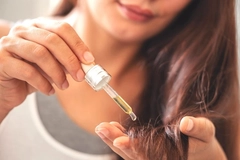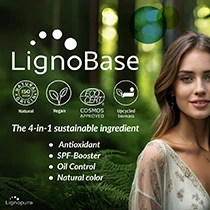Texen Group partners with Sulapac on bio-based cosmetics packaging
11 Mar 2024 --- French beauty packaging solution provider, Texen, and Sulapac collaborate on customized cosmetic packaging made from bio-based materials derived from agrowaste.
Along with its more traditional existing packaging types based on virgin and recycled feedstock, Texen now offers Sulapac material grades, including Sulapac Solid (certified industrially compostable) and the Sulapac Luxe (bio-based substitution for hard plastics) material family launched last year.
Typical applications made with Sulapac include injection molded caps and closures. Combined with Texen Group’s technical capabilities and know-how, highly complicated designs can be produced according to specific needs.
”Sulapac is a good example of a solution in which the high aesthetic and quality standards align with eco-responsibility. With Sulapac we can provide our customers market-leading products that bring additional value through pioneering eco-features,” says Denis Paccaud, Texen Group innovation director.
Luxury feel of bio-based materials
As part of its new partnership, Texen provides comprehensive testing and decoration services, including the metallization of Sulapac materials.
Sulapac works with bio-based and biodegradable biopolymers, alongside wood chips from industrial side streams.Sulapac materials’ main components are bio-based and biodegradable biopolymers, alongside sustainable fillers like wood chips from industrial side streams.
“The key benefits of choosing a solution made with Sulapac material include reduced carbon footprint, cutting down the use of fossils and the possibility to incorporate recycled content,” states Texen.
Sulapac previously supplied sustainable materials to the high-end cosmetics sector in partnerships with brands Chanel and Shiseido. It has partnered with other packaging specialists to create high-end bio-based refillable jars and deodorant sticks.
”Sulapac is a good example of a solution in which the high aesthetic and quality standards align with eco-responsibility. With Sulapac we can provide our customers market-leading products that bring additional value through pioneering eco-features,” says Paccaud.
Feedstock generations of bio-based materials
Sulapac classifies its bio-based materials into three “generations,” based on the threat they pose to food supply and land use. These terms are not defined by the law or standards, but they are commonly used in research and business.
“It’s worth noting that the classification into generations is not always strict, and there can be some overlap or variation in the definitions depending on the context and evolving research and technology,” highlights Sulapac.
The first-generation feedstocks are usually carbohydrate-rich plants that are also used for food and feed purposes. These feedstocks include crops like corn, sugarcane, wheat and vegetable oils.
The second generation includes feedstocks that are not suitable for human consumption. They originate from agriculture or forestry as products or side streams. These feedstocks include agricultural residues (such as corn stover, wheat straw), forestry residues (such as wood chips and sawdust) and dedicated energy crops (such as switchgrass and miscanthus).
Biobased fragrance cap by Sulapac.Second-generation feedstocks are considered more sustainable than first-generation feedstocks because they don’t compete with food production.
The third generation feedstocks are derived from non-food sources that do not compete with agricultural land or require arable soil. This group includes the “most innovative” feedstocks, such as some algae, microorganisms, as well as wastes and side streams from the food industry.
Texen has “optimized its processes” using Sulapac materials, ensuring “product quality and operational agility” comparable with more traditional feedstocks.
“We want to provide unique sensory experiences and bring that little extra, ‘the French touch’, to the beauty moment,“ says Julie Vergnion, Texen Group Marketing & Communication Director.
“Sulapac materials have a distinctive premium feel which makes them a great addition to our portfolio.”
Edited by Benjamin Ferrer














